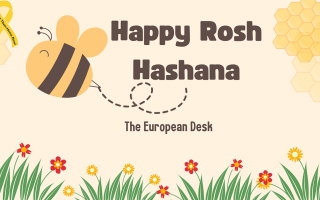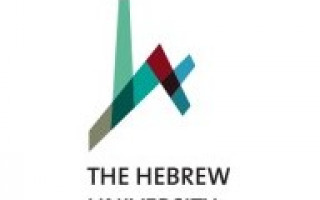News
Hebrew University Community Holds Rally to Call for the Immediate Release of Hostages in Gaza
The Hebrew University of Jerusalem held a rally at its Mount Scopus campus, urging for the immediate release of 100 hostages held by Hamas in Gaza.
Yesterday, the Hebrew University of Jerusalem paused its activities to hold a rally at the Mount Scopus campus, demanding the immediate release of the 100 hostages still being held by Hamas in Gaza. Among the speakers was Prof. Jonathan Dekel-Chen, whose son Sagui, a 36-year-old father of three young daughters, has been held captive for over 450 days.
The Hidden Connection Between Herpes and Alzheimer’s
A new study has uncovered a surprising link between Alzheimer’s disease and Herpes Simplex Virus-1 (HSV-1). Researchers found HSV-1 proteins embedded in Alzheimer’s brains, revealing how the virus is inhibited by tau protein—a key player in the disease. These insights could pave the way for innovative treatments targeting viral activity and the brain’s immune response to slow or even stop Alzheimer’s progression.
Hebrew University Community Holds Rally to Call for the Immediate Release of Hostages in Gaza
The Hebrew University of Jerusalem held a rally at its Mount Scopus campus, urging for the immediate release of 100 hostages held by Hamas in Gaza.
Yesterday, the Hebrew University of Jerusalem paused its activities to hold a rally at the Mount Scopus campus, demanding the immediate release of the 100 hostages still being held by Hamas in Gaza. Among the speakers was Prof. Jonathan Dekel-Chen, whose son Sagui, a 36-year-old father of three young daughters, has been held captive for over 450 days.
Hebrew University Community Holds Rally to Call for the Immediate Release of Hostages in Gaza
The Hebrew University of Jerusalem held a rally at its Mount Scopus campus, urging for the immediate release of 100 hostages held by Hamas in Gaza.
Yesterday, the Hebrew University of Jerusalem paused its activities to hold a rally at the Mount Scopus campus, demanding the immediate release of the 100 hostages still being held by Hamas in Gaza. Among the speakers was Prof. Jonathan Dekel-Chen, whose son Sagui, a 36-year-old father of three young daughters, has been held captive for over 450 days.
Hebrew University Community Holds Rally to Call for the Immediate Release of Hostages in Gaza
The Hebrew University of Jerusalem held a rally at its Mount Scopus campus, urging for the immediate release of 100 hostages held by Hamas in Gaza.
Yesterday, the Hebrew University of Jerusalem paused its activities to hold a rally at the Mount Scopus campus, demanding the immediate release of the 100 hostages still being held by Hamas in Gaza. Among the speakers was Prof. Jonathan Dekel-Chen, whose son Sagui, a 36-year-old father of three young daughters, has been held captive for over 450 days.
Hebrew University Community Holds Rally to Call for the Immediate Release of Hostages in Gaza
The Hebrew University of Jerusalem held a rally at its Mount Scopus campus, urging for the immediate release of 100 hostages held by Hamas in Gaza.
Yesterday, the Hebrew University of Jerusalem paused its activities to hold a rally at the Mount Scopus campus, demanding the immediate release of the 100 hostages still being held by Hamas in Gaza. Among the speakers was Prof. Jonathan Dekel-Chen, whose son Sagui, a 36-year-old father of three young daughters, has been held captive for over 450 days.
Free Year of Study for Female Computer Science or Mathematics Students New Hebrew University Initiative
The Hebrew University is launching a new initiative and is offering a free year of study for female undergraduate students in Computer Science or Mathematics, for those enrolling in the second semester starting on 20/03/25.
The Hebrew University is launching a new initiative and is offering a free year of study for female undergraduate students in Computer Science or Mathematics, for those enrolling in the second semester starting on 20/03/25.
Hebrew University Earns Global Recognition, Ranked 14th in Mathematics and Communication, 42nd in Law
A distinguished achievement for the Hebrew University, which has climbed in the Shanghai Global Ranking of Academic Subjects in Mathematics, Communication, and Law!
The university now ranks 14th globally in both Mathematics and Communication and 42nd in Law among the world’s top universities.
Additionally, Hebrew University holds an overall global ranking of 81st for 2024.
Innovation Without Borders: The Hebrew University and Uruguay's National Research and Innovation Agency (ANII) Launch a New Hub for Innovation and Entrepreneurship
The Hebrew University of Jerusalem and Uruguay’s National Research and Innovation Agency (ANII) are launching Innovacion Uruguay, a new innovation and entrepreneurship office on the Edmond J. Safra Campus. This partnership, supported by the Israeli Ministry of Foreign Affairs, and is expected to foster collaboration between Uruguay and Israel, providing the Uruguayan academic and business communities with access to advanced tools, expert training, and Israel’s thriving entrepreneurial ecosystem.













